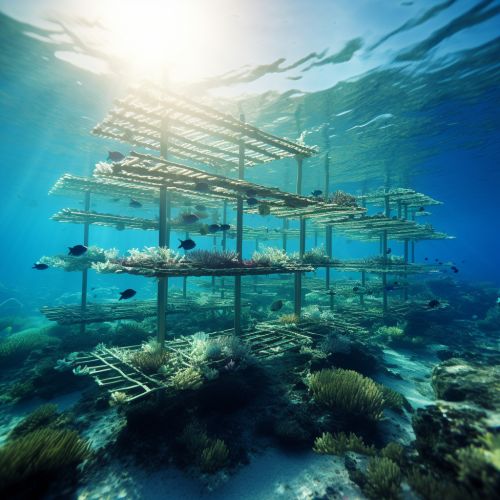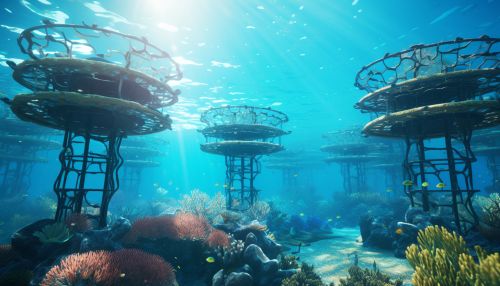Coral Reef
Introduction
Coral reefs are intricate underwater ecosystems that are bound together by structures of calcium carbonate, secreted by corals. They represent some of the most biologically diverse and economically valuable ecosystems on Earth, providing a habitat for at least a quarter of all marine species. This includes a wide array of organisms such as fish, mollusks, worms, crustaceans, echinoderms, sponges, tunicates, and other cnidarians. Despite flourishing in ocean waters that are often nutrient-poor, coral reefs are most commonly found at shallow depths in tropical waters. However, deep water and cold water corals also exist on smaller scales in other areas.
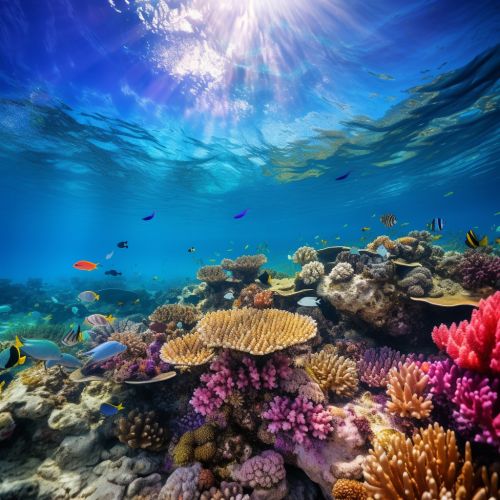
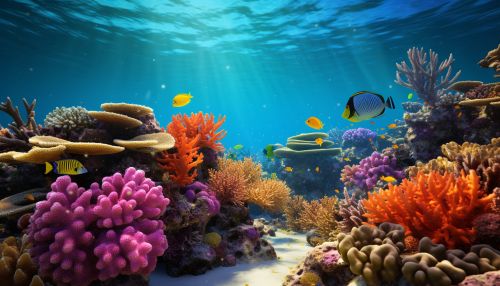
Formation and Structure
The formation of coral reefs commences when free-swimming coral larvae attach to submerged rocks or other hard surfaces along the edges of islands or continents. As the corals grow and expand, reefs take on one of three major characteristic structures — fringing, barrier or atoll. Fringing reefs, the most common, project seaward directly from the shore, forming borders along the shoreline and surrounding islands. Barrier reefs also border shorelines, but at a greater distance. They are separated from their adjacent land mass by a lagoon of open, often deep water. If a fringing reef forms around a volcanic island that subsides completely below sea level while the coral continues to grow upward, an atoll forms.
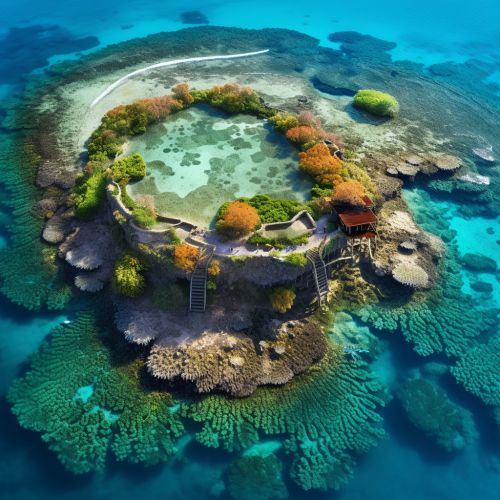
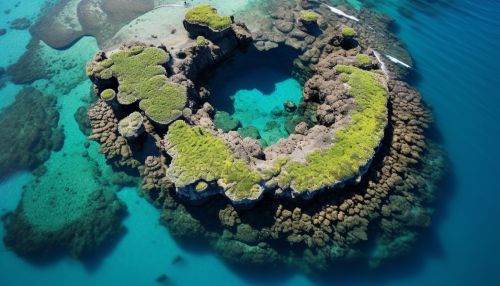
Biodiversity
Coral reefs are believed to host the highest biodiversity of any ecosystem on the planet—even more so than a tropical rainforest. Despite occupying less than 1% of the ocean floor, coral reefs are home to more than 25% of marine life. Thousands of species can be found living on a single reef. The Great Barrier Reef, for instance, is home to more than 1,500 species of fish, 400 species of hard coral, one-third of the world’s soft corals, 134 species of sharks and rays, six of the world’s seven species of threatened marine turtles, and more than 30 species of marine mammals, including the vulnerable dugong.
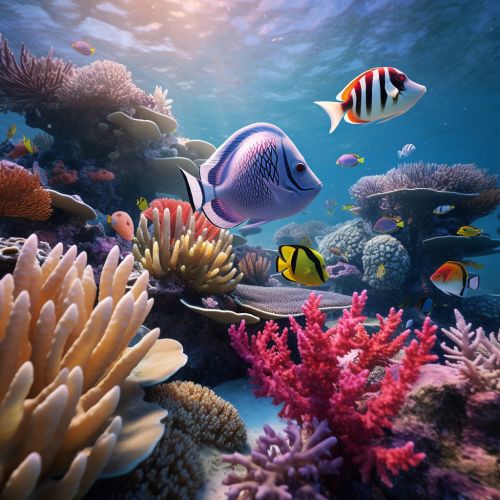
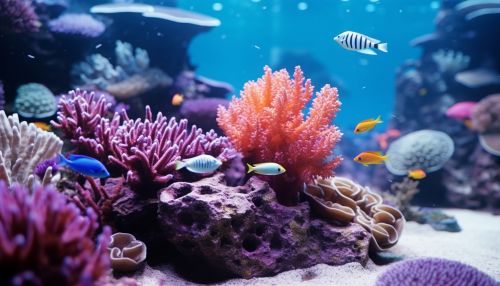
Threats to Coral Reefs
Coral reefs are under threat from numerous sources, primarily global warming and the resulting increase in ocean temperatures, which often prompts mass coral bleaching events. Other threats include overfishing, destructive fishing practices, coral mining, pollution (organic and non-organic), sedimentation, and coral diseases. Coral reefs are also threatened by storms, as well as sea level rise and changing ocean currents.
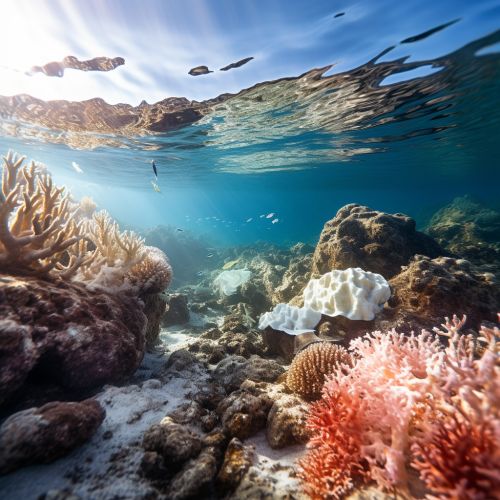
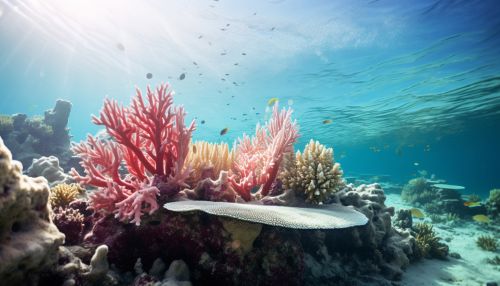
Conservation Efforts
Efforts to preserve coral reefs include laws forbidding the collection of coral, restrictions on pollution, and the establishment of marine parks and reserves. Other projects include coral farming, where small pieces of corals are grown in a nursery then replanted on the reef. There are also projects to move corals to deeper, cooler waters where they are more likely to survive.
